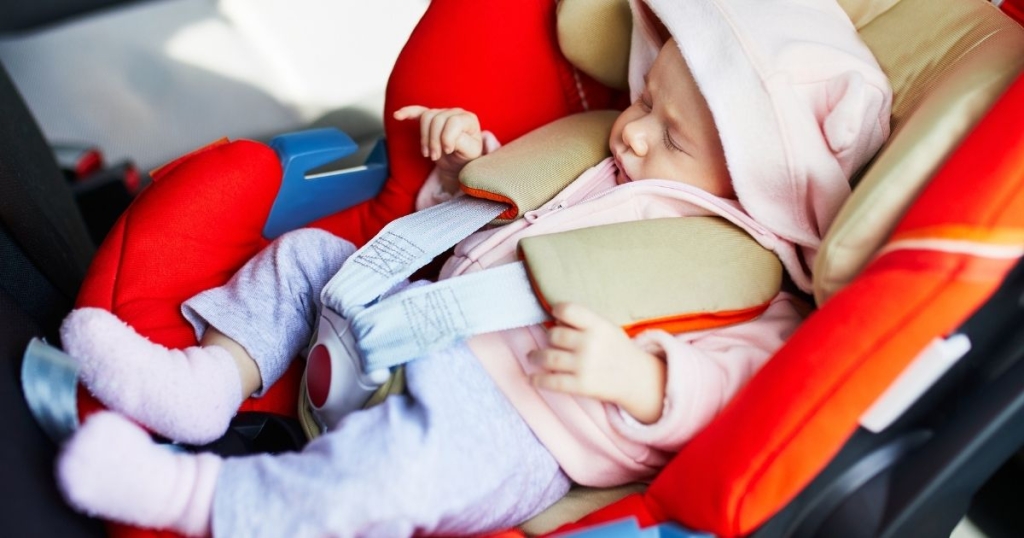
Authors: Rajsekar R. Rajaraman, MD, MS, UCLA Mattel Children’s Hospital
Jordan Eisner, BA, UC Davis School of Medicine
Reviewed: November 2021
SUMMARY
CDKL5 deficiency disorder (CDD) is a genetic disorder that affects brain development and usually leads to seizures. Symptoms usually begin in early infancy. CDD is caused by a missing or ineffective protein in the body called CDKL5. This protein is necessary for normal brain development. The gene that tells the body to make CDKL5 is on the X-chromosome, and the disease affects mostly girls. Researchers are still trying to learn if boys or girls are more severely affected.
The most common symptoms of CDD are:
- Seizures early in life that are usually hard to control
- Severe developmental delay
- Visual impairment
CDKL5 deficiency disorder can cause many different symptoms. It may look different in every child.
JUMP TO
Disorder Overview
DESCRIPTION
CDD is a genetic disorder that some children are born with. It is caused by a genetic mutation. The mutation prevents the body from creating the right amount of functioning CDKL5 protein, a protein needed for normal brain development.


Though children with this disease may have different combinations of symptoms, most children with this disease do have seizures and developmental delays:
- Seizures. Seizures usually appear in the first three months of life. They tend to be difficult to control with medications. These recurrent seizures are known as “epilepsy.”
- Developmental and motor delays. The developmental and motor delays that go along with CDD are usually caused by the frequent seizures. Because the seizures are usually the source of the delays, CDD is known as an epileptic encephalopathy. Developmental delays can also be present without seizures.
Children with CDD will have the disease for their entire lives. The severity of the disorder varies, but most children are unable to live independently. Currently, there is no cure for CDD. Its symptoms can be managed. However, they cannot be completely resolved.
SIGNS AND SYMPTOMS
Symptoms vary from child to child. Symptoms may include:
- Seizures. CDD is associated with many different seizure types:
- Infantile spasms. Often appear as a bending of the body and straightening of the limbs. They usually last only 1 or 2 seconds and occur in clusters.
- Myoclonic seizures. Quick, jerking movements.
- Tonic seizures. Stiffening of the entire body.
- Tonic-clonic seizures. Stiffening of the entire body, followed by a rhythmic jerking of the arms and legs.
Status epilepticus, or a seizure lasting longer than 5 minutes, can occur with CDD.
- Severe intellectual disability. Children may not meet developmental milestones, such as crawling, walking, or talking, at the usual age.
- Hand stereotypies. Children may make repetitive, purposeless movements of the hands.
- Hypotonia. Children may have a low level of muscle tone.
- Cortical visual problems. Children may not be able to process what they are seeing.
- Gastrointestinal symptoms. Children may experience constipation or reflux.
- Feeding Issues. Many children will need a feeding tube.
- Scoliosis. Children may develop a curved spine.
- Difficulty Sleeping. Children may have trouble going to sleep. They may have a lot of energy at night.
CDD is diagnosed with a genetic test. Genetic testing is usually ordered once a child shows symptoms, such as seizures.
CAUSES
CDD is caused by a genetic mutation in the CDKL5 gene. The mutation is usually “de novo.” This means that it is a new mutation in the child’s genes. It is not passed down from the parents.
CDD can be caused by a wide variety of different mutations in the CDKL5 gene. So far, researchers don’t know if different mutations lead to different levels of severity of CDD. There are currently more than 250 known different mutations that can cause CDD. New mutations are still being researched.


CDD and Biological Gender Differences
The CDKL5 gene is on the X-chromosome. Girls have two X-chromosomes. Boys have one X- and one Y-chromosome. This means that girls and boys may have different experiences of CDD.
Girls and CDKL5
Boys and CDKL5
It was once thought that boys with a CDKL5 mutation were more severely affected unless they also had mosaicism. Mosaicism means that not all of a person’s cells have a mutation. However, new research has shown that boys might not be more severely affected than girls. The answer to this question remains unknown.
LABORATORY INVESTIGATIONS
Some lab tests used with CDD include:
Genetic tests
Electroencephalograms (EEGs)
Brain magnetic resonance imaging (MRI)
TREATMENT AND THERAPIES
Currently, there is no cure for CDD. Therapies are focused on improving symptoms. Some important therapies include:
Antiseizure medication
Surgery
Ketogenic diet
Feeding tube
Supportive devices


Multidisciplinary Care
Early intervention from a multidisciplinary team can help with CDD. Comprehensive care might include the following specialties:
- Pediatric Neurology with a specialty in Epilepsy
- Gastroenterology
- Pediatric Genetics
- Physical therapy
- Speech therapy
- Vision therapy
- Occupational therapy
- Family education
- Community resources
Many therapies for CDD are currently being studied, including gene therapies. Hopefully, there will be more targeted treatments in the future.
OUTLOOK
There is no cure for CDKL5 deficiency disorder. Patients with CDD may have a range of developmental delays. Many children with CDD will not be able to walk or talk. Some will also need a feeding tube. Life expectancy is currently unknown.
Seizures can be difficult to control, especially over time. Lifetime medication is often necessary.
Children with CDD will likely need extensive care and therapy throughout their lives.
There are multiple new drugs currently under study. Studies of gene therapies are also on the horizon.
RELATED DISORDERS
There are a few disorders related to CDD.
- Rett syndrome. Until 2004, CDD was considered a subtype of Rett syndrome. Symptoms of CDD are very similar to those of Rett syndrome. However, the two disorders are caused by mutations in different genes.
- West syndrome. CDD is similar to West syndrome because both are associated with infantile spasms.
- Lennox-Gastaut syndrome (LGS). CDD is similar to LGS because both are associated with developmental delays and multiple seizure types. However, LGS is linked to multiple genes, while CDD is linked only to the CDKL5 gene.
Resources
Organizations
AllStripes
The mission of AllStripes is to unlock new treatments for people affected by rare disease. Serving as a research platform dedicated to rare diseases, AllStripes makes it easy for patients to contribute to new treatment research from home. There is no cost for patients, families, or advocacy organizations to participate, join research programs, or use the platform. AllStripes does the work to collect and analyze de-identified medical records to help power faster, better drug development. By bringing patients, doctors, and researchers together everyone learns from each other’s experiences to effectively push for better treatments across all rare conditions. They have over 40 active rare disease programs, which includes CDKL5, and they are adding more every month.
AllStripes partners with rare disease patient advocacy organizations and key opinion leaders to build the programs. Expert researchers produce original research insights and publications, as well as partner with academic institutions and pharmaceutical companies to make progress towards new treatments.
Disclaimer: AllStripes is a Public Benefit Corporation funded by private investors. Child Neurology Foundation does not specifically endorse products provided by AllStripes.
CDKL5 Research Collaborative
The mission of the CDKL5 Research Collaborative is to fund clinical and therapeutic research, to raise awareness of CDKL5 disorder, and provide support, inspiration, and education to families. The CDKL5 Research Collaborative provides research updates, clinical trials information, and a list of the CDKL5 Centers of Excellence on their website. A list of support groups and educational materials can also be accessed through the website. The CDKL5 Research Collaborative has a robust awareness campaign for both Rare Disease Day and CDKL5 Awareness month. CDKL5 Research Collaborative is currently funding two research projects, with more in the queue.
International Foundation for CDKL5 Research
The mission of the International Foundation for CDKL5 Research (IFCR) is to treat and cure CDKL5 Deficiency disorder by funding scientific research, while helping affected individuals and their families to thrive. The IFCR is committed to funding research, both scientific and clinical, that will bring about treatments and, ultimately, a cure for CDKL5. The IFCR strives to raise awareness of this rare disorder within the medical and lay communities. Above all, the IFCR seeks to support all CDKL5 families and caregivers, whether newly diagnosed or well into adulthood, by providing the most current information on treatment advances and how to live their best life possible. To help with research for CDKL5, please visit the IFCR Help Our Researchers page.
Child Neurology Foundation (CNF) solicits resources from the community to be included on this webpage through an application process. CNF reserves the right to remove entities at any time if information is deemed inappropriate or inconsistent with the mission, vision, and values of CNF.
Research
ClinicalTrials.gov for CDKL5 (birth to 17 years)
These are clinical trials that are recruiting or will be recruiting. Updates are made daily, so you are encouraged to check back frequently.
ClinicalTrials.gov is a database of privately and publicly funded clinical studies conducted around the world. This is a resource provided by the U.S. National Library of Medicine (NLM), which is an institute within the National Institutes of Health (NIH). Listing a study does not mean it has been evaluated by the U.S. Federal Government. Please read the NLM disclaimer for details.
Before participating in a study, you are encouraged to talk to your health care provider and learn about the risks and potential benefits.
Family Stories
Meet some of the children with CDKL5 on the blog page of the International Foundation for CDKL5 Research.
The information in the CNF Child Neurology Disorder Directory is not intended to provide diagnosis, treatment, or medical advice and should not be considered a substitute for advice from a healthcare professional. Content provided is for informational purposes only. CNF is not responsible for actions taken based on the information included on this webpage. Please consult with a physician or other healthcare professional regarding any medical or health related diagnosis or treatment options.
References
Cdkl5 deficiency disorder [Internet]. Children’s Hospital of Philadelphia. 2019 Nov [cited 2021 Sep 28]. Available from: https://www.chop.edu/conditions-diseases/cdkl5-deficiency-disorder
Cdkl5 deficiency disorder [Internet]. NORD (National Organization for Rare Disorders). 2020 Apr [cited 2021 Sep 28]. Available from: https://rarediseases.org/rare-diseases/cdkl5
Hector RD, Kalscheuer VM, Hennig F, Leonard H, Downs J, Clarke A, Benke TA, Armstrong J, Pineda M, Bailey MES, Cobb SR. CDKL5 variants: Improving our understanding of a rare neurologic disorder. Neurol Genet. 2017 Dec 15;3(6):e200. https://doi.org/10.1212/NXG.0000000000000200. PMID: 29264392; PMCID: PMC5732004.
Jakimiec M, Paprocka J, Śmigiel R. CDKL5 deficiency disorder – A complex epileptic encephalopathy. Brain Sci. 2020 Feb 17;10(2):107. https://doi.org/10.3390/brainsci10020107. PMID: 32079229; PMCID: PMC7071516.
Kiriakopoulos E. CDKL5 disorder [Internet]. Epilepsy Foundation. 2015 Jun [cited 2021 Sep 28]. Available from: https://www.epilepsy.com/learn/epilepsy-due-specific-causes/genetic-causes-epilepsy/specific-genetic-epilepsies/cdkl5-disorder
Leonard H, Junaid M, Wong K, Demarest S, Downs J. Exploring quality of life in individuals with a severe developmental and epileptic encephalopathy, CDKL5 Deficiency Disorder. Epilepsy Res. 2021 Jan;169:106521. https://doi.org/10.1016/j.eplepsyres.2020.106521. Epub 2020 Dec 1. PMID: 33341033.
Olson HE, Demarest ST, Pestana-Knight EM, Swanson LC, Iqbal S, Lal D, Leonard H, Cross JH, Devinsky O, Benke TA. Cyclin-Dependent Kinase-Like 5 Deficiency Disorder: Clinical Review. Pediatr Neurol. 2019 Aug;97:18-25. https://doi.org/10.1016/j.pediatrneurol.2019.02.015. Epub 2019 Feb 23. PMID: 30928302; PMCID: PMC7120929.
Thank you to our 2023 Disorder Directory partners:





